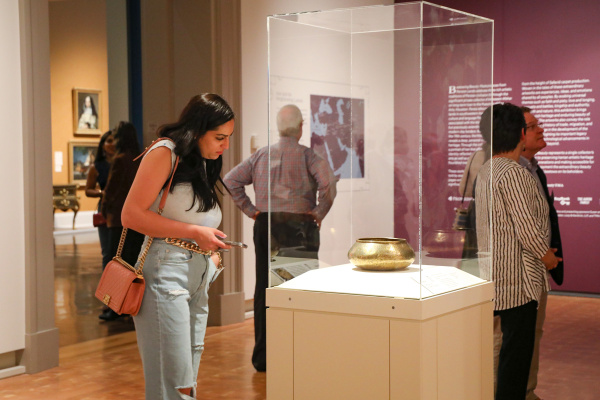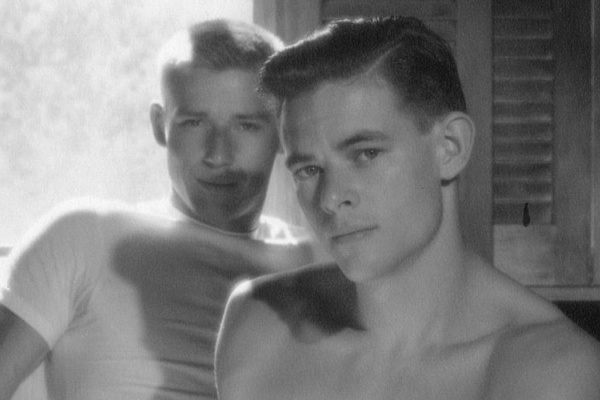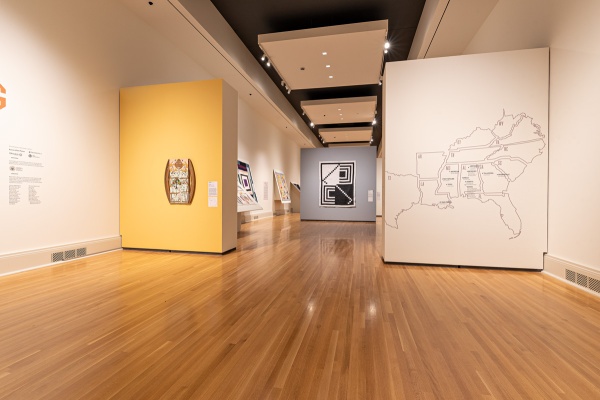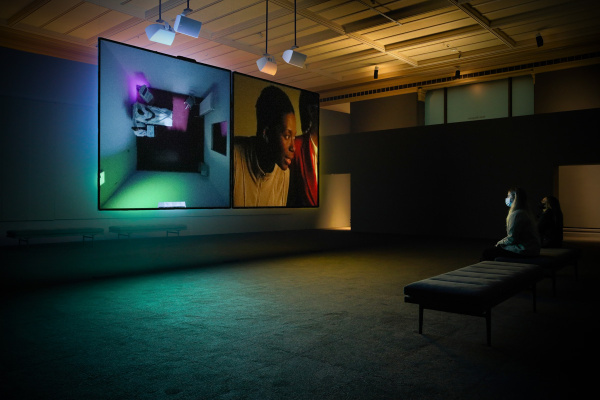Annual Report 2022
Exhibitions

Bestowing Beauty: Masterpieces from Persian Lands
April 23rd, 2022 - July 17th, 2022
Celebrating the rich artistic and cultural heritage of Persian civilization, Bestowing Beauty: Masterpieces from Persian Lands features over 100 works from the sixth to the nineteenth century drawn from the preeminent Persian art collection of Hossein Afshar. Persia refers to the historic lands in southwestern Asia where the Persian culture and language flourished—a region now associated with the Islamic Republic of Iran, but previously extending beyond its modern-day borders. Through the collector’s eyes, we see a portrait of Iran that manifests a strong sense of identity reflected and affirmed by the visual arts, as well as an artistic sensibility that has permeated across time, space, and medium.
The exhibition showcases textiles, manuscripts, ceramics, paintings, metalwork, scientific instruments, woodwork, and jeweled objects. Highlights include exquisite miniature paintings from the Shahnama (Book of Kings), the Persian national epic; an array of historically significant ceramics; rare Qur’an leaves; and a monumental silk carpet from the height of Safavid carpet production. Bestowing Beauty represents a dedication to preserving Iranian artistic heritage for future generations and desire to make it accessible for study and enjoyment.
Woven throughout the tales of these extraordinary artworks are experiences, ideas, and emotions shared by all peoples. By evoking universal themes of faith and piety, love and longing, kingship and authority, banquets and battles, and earth and nature, the exhibition brings alive the rich heritage and enduring beauty of Persian art. The artworks also explore the role and fascinating history of trade, migration, and cultural exchange in the development of Persian art, demonstrating its important legacy in artistic and technological advancement within Islamic lands and beyond

Contrary Bodies
April 2nd, 2022 - July 3rd, 2022
"I believe in making contradictions productive, not in having to choose one side or the other side. As opposed to choosing either/or, choosing both." With these words, the activist and author Angela Davis not only foregrounds the dilemma of our historical moment, but also identifies the challenge it poses to art museums. Diversity has become impossible to ignore, and communities are voicing their objections to a centuries-old, white-washed narrative of cultural histories embodied in traditional museum collecting and display. At the heart of these shifts in representation, many museums are working to rediscover the complexities and nuances that make up the worlds we occupy, and to center voices that were previously marginalized. Museums such as the Toledo Museum of Art are taking a fresh, critical look at their collections to celebrate a broader diversity.
The works in Contrary Bodies, all from the TMA’s permanent collection, feature BIPOC (Black, Indigenous, and people of color), women, and members of the LGBTQ+ community as artists and subjects. While these works represent a spectrum of social groups and cultures, bringing them together is not just about making differences visible. The human figure is depicted according to a variety of approaches, ranging from the intimate to the erotic to the formal. In each case the depiction seems to question certain racialized or gendered assumptions about how such a figure should look and/or behave. In this sense, these works reject the constraints of “otherness” and declare something about what it means to be an active participant in the larger culture of humanity.
This exhibition is curated and designed by students in the University of Toledo’s Art Museum Practices and Graphic and Interactive Design Concentrations.

Living Legacies: Art of the African American South
January 15th, 2022 - May 1st, 2022
A landmark exhibition organized by the Toledo Museum of Art will present the museum’s recent acquisitions of major works by African American artists from the southern United States. Living Legacies: Art of the African American South features 24 works, from large-scale assemblages and mixed media sculptures to paintings, textiles and works on paper acquired from the Souls Grown Deep Foundation. Artists represented are Leroy Almon, Thornton Dial, Thornton Dial, Jr., Richard Dial, Lonnie Holley, Ronald Lockett, Joe Minter, John B. Murray, Royal Robertson, Georgia Speller, Henry Speller, Luster Willis, and several generations of women quiltmakers, including Louisiana Bendolph, Mary Elizabeth Kennedy, Jessie T. Pettway, Lola Pettway, Lucy T. Pettway, Martha Pettway, Rita Mae Pettway and Florine Smith, as well as Estelle Witherspoon, one of the founders of the Freedom Quilting Bee. In recent years, these artists’ innovative practices have received overdue recognition throughout institutional spaces and in the larger cultural discourse. This exhibition will celebrate their crucial contributions to a broader understanding of American art as well as their enduring legacies.

Stan Douglas: Doppelgänger
October 16th, 2021 - May 15th, 2022
The science fiction-inspired film Doppelgänger (2019) by Stan Douglas, one of the leading artists of our day, will be on view beginning October 16, 2021, at Toledo Museum of Art (TMA), its first North American museum presentation. The film centers around an astronaut named Alice who is cloned and embarks on solitary outer space mission. When Alice’s ship unexpectedly turns around, she presumes she has returned to Earth, but instead she arrives at another realm, the exact reverse of her true home. In one version, Alice is welcomed and provided support upon her return, while in another, Alice is received as a potential hostile threat. The work comprises two translucent screens, which can be viewed from either side and display parallel narratives that unfold simultaneously.
Doppelgänger employs science fiction as a prompt to understand the temporal intersections and simultaneous realities that exist in our present. Alice’s return, one as benevolent earthly citizen and another as a potentially dangerous alien, alludes to the heightened debates around citizenship and homelands, such as the reception of immigrants and refugees, as well as the systemic exclusion and oppression of marginal communities. The continual mirroring and sense of displacement throughout the film echoes many people’s experiences during the current pandemic. For those able to stay at home, individuals are constantly observing their own visages and conducting their lives mediated through a virtual screen. As the world enters a new phase of this pandemic, society finds itself confronting a new, unknown reality or realities.

Age of Armor: Treasures from the Higgins Armory Collection at the Worcester Art Museum
November 6th, 2021 - February 27th, 2022
From the warriors of ancient Greek legends, to the knights of the Middle Ages, to the superheroes of today’s popular culture, the idea of personal body armor has an enduring hold on the human imagination. Armor is as old as human civilization, and has been used in various forms in societies around the globe, but full suits of articulated steel plates were made only in Europe, and only for a brief time in the late Middle Ages and Renaissance. Demonstrating the significant role armor played in social, technological, military, and cultural life, this exhibition explores the story of armor in its golden age.
Suits of armor are among the most popular objects with museumgoers, but there are few significant collections of armor in the United States. In 2014, the Worcester Art Museum acquired the Higgins Armory Collection, the second largest arms and armor collection in the Americas. While most of this rare collection is in storage awaiting the creation of a dedicated arms and armor gallery, there is a unique opportunity to share these objects with a national and international public. Visitors will discover the diverse and often surprising stories embedded in these powerful objects. Far from the ungainly exoskeleton we often imagine today, the suit of armor was made to be sleek and stylish—painstakingly engineered, elegantly designed, and treasured as the expression of its owner’s taste, sophistication, and prowess.